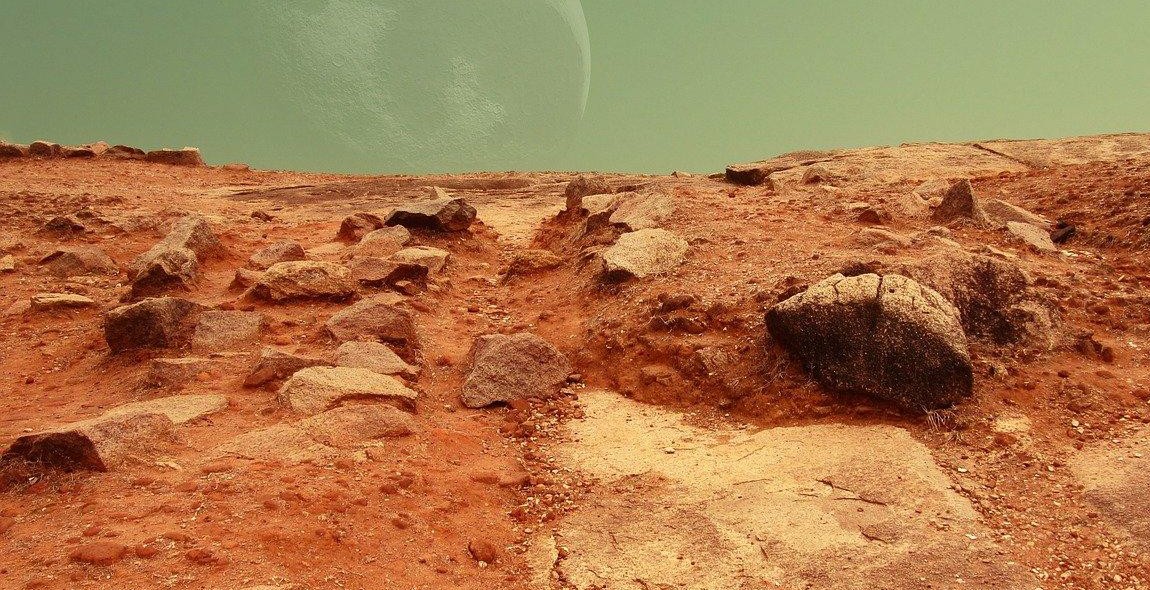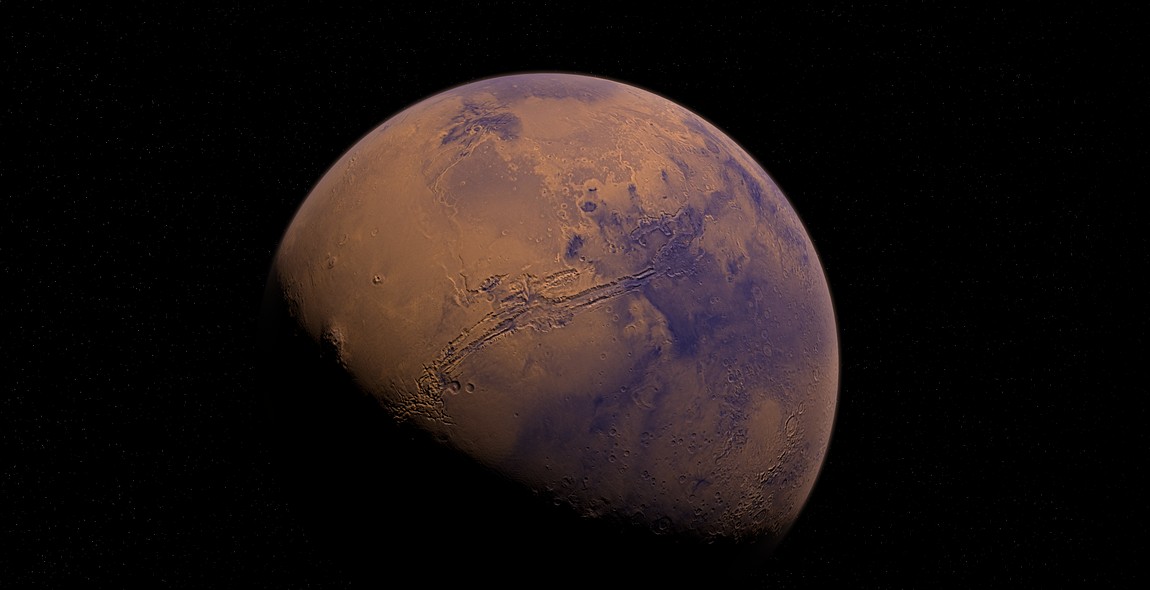Introduction
Mars, the fourth planet from the Sun, has long captured the imagination of scientists, astronomers, and space enthusiasts alike. Its distinct reddish hue and proximity to Earth make it a fascinating subject of study and exploration. In recent years, there has been a surge of interest in Mars, with numerous missions and rovers sent to unveil its mysteries.
In this article, we aim to demystify the enigmatic nature of Mars and provide an overview of our current knowledge about the Red Planet. From its geological features to its potential for sustaining life, we will delve into the various aspects that make Mars a captivating celestial body.
We will begin by discussing the physical characteristics of Mars, including its size, atmosphere, and surface conditions. Next, we will explore the history of Mars exploration and the significant missions that have contributed to our understanding of the planet. Additionally, we will examine the possibility of past or present life on Mars and the ongoing search for signs of microbial existence.
Join us on this exciting journey as we unravel the mysteries of Mars and gain insight into the scientific discoveries that have shaped our understanding of the Red Planet.
Exploration of Mars
Mars has long captivated the imagination of scientists and space enthusiasts alike. Over the years, numerous missions have been launched to unravel the mysteries of the Red Planet. Let’s delve into the historical and recent missions that have contributed to our understanding of Mars.
Historical Missions
1. Viking Program (1975-1976): The Viking landers were the first spacecraft to successfully touch down on Mars. They conducted experiments to search for signs of life, analyzed the planet’s soil composition, and captured stunning images of the Martian surface.
2. Mars Pathfinder (1997): This mission deployed the Sojourner rover, the first wheeled vehicle to explore another planet. It collected valuable data on the planet’s geology, weather patterns, and atmosphere, paving the way for future missions.
3. Mars Global Surveyor (1996-2006): This orbiter extensively mapped the Martian surface, providing crucial insights into the planet’s topography, mineralogy, and climate. It also discovered evidence of ancient riverbeds and polar ice caps.
Recent Missions
1. Mars Science Laboratory (2012-present): The Curiosity rover, a part of this mission, has been instrumental in advancing our knowledge of Mars. It has analyzed the planet’s rocks and soil, detected organic compounds, and assessed the habitability potential of the Martian environment.
2. Mars Atmosphere and Volatile Evolution Mission (MAVEN) (2013-present): This orbiter is dedicated to studying Mars’ upper atmosphere, ionosphere, and interactions with the Sun and solar wind. It has shed light on the processes responsible for the loss of the Martian atmosphere over time.
3. ExoMars Trace Gas Orbiter (2016-present): This joint mission between the European Space Agency (ESA) and Roscosmos aims to search for traces of methane and other gases that could indicate the presence of biological or geological activity on Mars. It is also serving as a data relay satellite for future Mars missions.
The exploration of Mars continues to be a priority for space agencies worldwide. These missions, both historical and recent, have paved the way for upcoming endeavors and brought us closer to unraveling the secrets of the Red Planet.

Geology and Climate of Mars
Mars, often referred to as the Red Planet, has long fascinated scientists and astronomers due to its unique geological features and climate. Understanding the geology and climate of Mars is crucial in unraveling the mysteries of this neighboring planet.
Geological Features
Mars boasts a diverse range of geological features that provide valuable insights into its past and present. The planet is home to the largest volcano in the solar system, Olympus Mons, standing at a staggering height of 13.6 miles (22 kilometers). This shield volcano is evidence of Mars’ volcanic activity, which was more prevalent in its early history.
Another remarkable geological feature is the Valles Marineris, a vast canyon system stretching over 2,500 miles (4,000 kilometers) in length. This system surpasses the Grand Canyon in size and depth, offering a glimpse into the planet’s tectonic and erosional processes.
The surface of Mars is also marked by impact craters, remnants of asteroid and meteoroid collisions. These craters provide scientists with valuable information about the age of the planet’s surface and the frequency of impacts over time.
Atmosphere and Climate
Mars has a thin atmosphere composed primarily of carbon dioxide (95.3%), with traces of nitrogen (2.7%) and argon (1.6%). The lack of a significant magnetic field has led to the erosion of its atmosphere over time, resulting in a surface pressure about 0.6% that of Earth’s.
The Martian climate is characterized by extreme cold temperatures, with average surface temperatures around -80 degrees Fahrenheit (-62 degrees Celsius). The planet experiences distinct seasons due to its axial tilt, similar to Earth. However, the duration of Martian seasons is approximately twice as long.
Additionally, Mars is known for its dust storms that can engulf the entire planet. These storms, fueled by strong winds, can last for weeks or even months, affecting the planet’s climate patterns.
In conclusion, Mars’ geological features and climate provide valuable insights into the planet’s history and potential habitability. Further exploration and study of Mars will undoubtedly contribute to our understanding of the universe and the possibility of life beyond Earth.
Possibility of Life on Mars
One of the most intriguing questions surrounding Mars is whether or not there is the possibility of life on the Red Planet. Scientists have been studying Mars for decades, and while conclusive evidence of life has not been found yet, there are several factors that suggest the potential for microbial life on Mars.
Search for Microbial Life
Over the years, numerous missions have been sent to Mars to search for signs of microbial life. The Mars rovers, such as Curiosity and Perseverance, have been equipped with advanced instruments to analyze the Martian soil and rocks for any traces of organic molecules or signs of past or present life. These missions have provided valuable data, indicating that Mars could have once had conditions suitable for life to exist.
One key discovery is the presence of liquid water on Mars. Although it is not abundant on the surface, scientists have found evidence of water in the form of ice in the polar regions and occasional liquid brines. Water is essential for life as we know it, and its presence on Mars raises the possibility of microbial life existing below the surface or in protected environments.
Additionally, the discovery of methane in the Martian atmosphere has sparked excitement among scientists. On Earth, methane is primarily produced by living organisms, and while there are non-biological processes that can also generate methane, its presence on Mars suggests the potential for microbial activity.
Future Human Colonization
Beyond the search for microbial life, Mars has also captivated the imagination of scientists and space enthusiasts as a potential future home for human colonization. The challenges of living on Mars are immense, but recent advancements in technology and our understanding of the planet have made the idea more feasible.
One of the key factors in future colonization is the availability of resources. Mars has abundant reserves of water ice, which can be extracted and used for drinking water, fuel, and as a source of oxygen. The thin atmosphere can also be utilized to generate breathable air and protect against harmful radiation.
Moreover, the presence of minerals and elements on Mars, such as iron, aluminum, and sulfur, could potentially support the development of infrastructure and sustained human habitation.
While there are still many challenges to overcome, the possibility of life on Mars and the potential for human colonization make the Red Planet an exciting subject of scientific exploration and a potential future destination for humanity.

Future Missions to Mars
NASA’s Mars Missions
NASA has been at the forefront of exploring Mars, with several missions planned in the near future. One of the most anticipated missions is the Mars Sample Return mission, a joint effort with the European Space Agency (ESA). This mission aims to collect samples from the Martian surface and return them to Earth for detailed analysis. Scientists believe that studying these samples could provide valuable insights into the past and present habitability of Mars.
Another notable mission is the Mars 2020 Rover mission, which is scheduled to launch in July 2020. The rover, named Perseverance, is designed to explore the Jezero Crater and search for signs of ancient life. It will also conduct experiments to support future human missions to Mars, including testing technologies that could produce oxygen from the Martian atmosphere.
SpaceX’s Ambitious Plans
SpaceX, the private aerospace company founded by Elon Musk, has its sights set on Mars colonization. Musk envisions establishing a self-sustaining colony on the Red Planet within the next few decades. To achieve this goal, SpaceX is developing the Starship, a fully reusable spacecraft capable of carrying both crew and cargo to Mars.
The Starship is expected to undergo several test flights in the coming years, with the first crewed mission possibly taking place as early as 2024. SpaceX plans to send multiple Starships to Mars during each opportunity, gradually building up infrastructure and resources to support human habitation.
In addition to transportation, SpaceX aims to develop technologies for sustainable living on Mars. This includes creating systems for producing food, water, and energy on the planet. The company also envisions utilizing local resources, such as Martian regolith, to construct habitats and other structures.
While the timeline for SpaceX’s Mars colonization plans may seem ambitious, the company’s track record of innovation and progress in space exploration makes it an exciting prospect for future missions to the Red Planet.
Conclusion
In conclusion, Mars has captivated human imagination for centuries, and with recent advancements in technology, our understanding of the Red Planet has grown exponentially. Through various missions and research, scientists have been able to demystify many aspects of Mars, shedding light on its geological history, atmosphere, and potential for supporting life.
One of the most significant discoveries is the presence of water on Mars. While it exists mostly in the form of ice, the confirmation of liquid water on the planet’s surface in the past raises intriguing possibilities for the existence of microbial life or the potential for future human colonization.
Additionally, Mars’ geology reveals a complex and diverse landscape, with evidence of ancient rivers, volcanoes, and impact craters. These features provide valuable insights into the planet’s evolution and its potential for habitability.
The thin atmosphere of Mars, composed primarily of carbon dioxide, poses challenges for human exploration and settlement. However, advancements in technology and ongoing research aim to overcome these obstacles and pave the way for future missions.
With the successful landing of various rovers and the planned missions to return samples from Mars, our knowledge of the planet will continue to expand. These missions will allow scientists to analyze Martian rocks and further investigate the possibility of past or present life.
In conclusion, while there is still much to uncover and explore, the demystification of Mars is well underway. As we continue to learn more about this enigmatic planet, it fuels our curiosity and inspires us to push the boundaries of space exploration.
